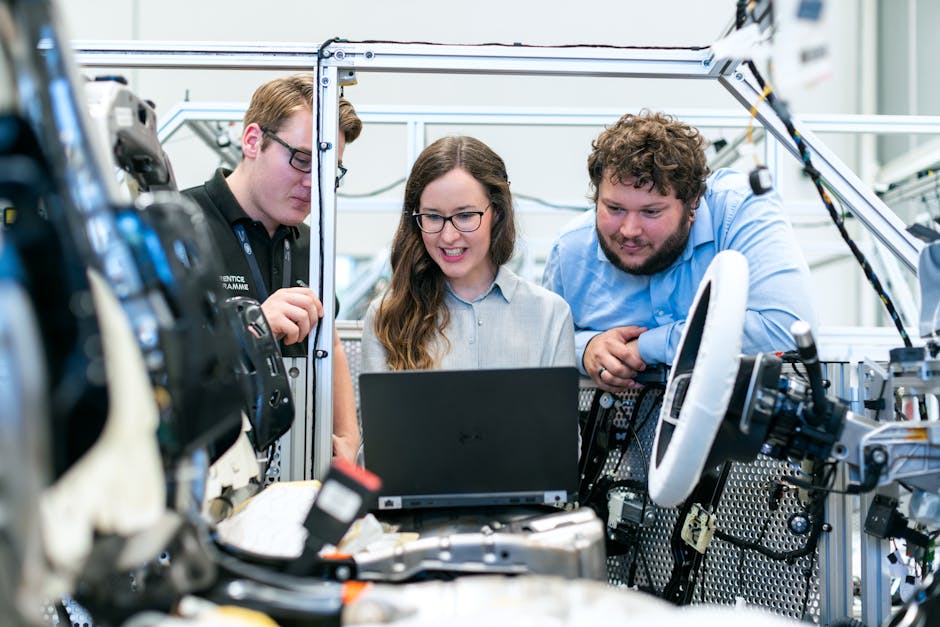The Rise of Workplace Automation: Revolutionizing Efficiency and Employee Experience
“Explore the transformative power of workplace automation in today's hybrid offices. Learn how AI-driven tools streamline tasks, boost productivity, and enhance employee experience. Discover the benefits of automation for workplace leaders and how it's shaping the future of work. ”

The Rise of Workplace Automation: Revolutionizing Efficiency and Employee Experience
In today's rapidly evolving business landscape, workplace automation has emerged as a game-changer, transforming how organizations operate and employees work. As we navigate the complexities of hybrid work environments, the integration of artificial intelligence (AI) and automation into our daily workflows is becoming increasingly crucial. This article explores the transformative power of workplace automation, its benefits, and how it's reshaping the future of work.

What is Workplace Automation?
Workplace automation refers to the use of technology to perform tasks and processes with minimal human intervention. It leverages AI, machine learning, and other advanced technologies to streamline workflows, reduce manual labor, and enhance overall efficiency. From scheduling meetings to analyzing workplace data, automation is revolutionizing various aspects of our professional lives.
The Evolution of Automation in the Workplace
The concept of automation in the workplace isn't new, but recent advancements in AI have significantly expanded its capabilities and applications. Today's automation tools go beyond simple task repetition; they can learn, adapt, and make decisions based on complex data analysis.
For instance, AI-powered chatbots can now handle customer inquiries with remarkable accuracy, while predictive analytics tools can forecast office space requirements based on historical usage patterns. These advancements are not just improving efficiency; they're fundamentally changing how we approach work.
Benefits of Automation in the Workplace
The integration of automation into workplace processes offers numerous advantages for both employees and organizations:
-
Enhanced Productivity: By automating repetitive tasks, employees can focus on more strategic, value-added work. This shift not only boosts productivity but also increases job satisfaction.
-
Improved Accuracy: Automated systems are less prone to human errors, ensuring higher accuracy in data entry, analysis, and other routine tasks.
-
Cost Savings: While there may be initial investment costs, automation often leads to significant long-term savings by reducing labor costs and improving operational efficiency.
-
Better Decision-Making: Automated data collection and analysis provide leaders with real-time insights, enabling more informed and timely decision-making.
-
Enhanced Employee Experience: By eliminating mundane tasks, automation can lead to more engaging work environments and improved employee satisfaction.

Practical Applications of Workplace Automation
Let's explore some concrete examples of how automation is being applied in modern workplaces:
1. Intelligent Space Management
AI-driven systems can optimize office space utilization by analyzing usage patterns and automatically suggesting the most efficient layouts or booking arrangements. This is particularly valuable in hybrid work environments where flexibility is key.
2. Automated Meeting Scheduling
Gone are the days of endless email chains to find a suitable meeting time. Automated scheduling tools can analyze participants' calendars and suggest optimal meeting times, even considering factors like time zones and individual preferences.
3. Smart Building Management
Automation extends to facility management as well. Smart building systems can adjust lighting, heating, and cooling based on occupancy and usage patterns, leading to energy savings and improved comfort.
4. Data-Driven HR Processes
From recruitment to performance management, automation is streamlining HR processes. AI-powered tools can screen resumes, schedule interviews, and even provide initial assessments of candidates.
5. Predictive Maintenance
In office environments with complex equipment, predictive maintenance algorithms can anticipate when machines need servicing, preventing downtime and extending equipment lifespan.
Overcoming Challenges in Implementing Workplace Automation
While the benefits of automation are clear, implementing these systems can come with challenges:
-
Employee Resistance: Some employees may fear job displacement. Clear communication about how automation will enhance their roles rather than replace them is crucial.
-
Integration with Existing Systems: Ensuring new automated systems work seamlessly with existing technology can be complex.
-
Data Security Concerns: As automation often involves handling sensitive data, robust security measures are essential.
-
Training and Adaptation: Employees need proper training to effectively use and benefit from new automated systems.

The Future of Workplace Automation
As we look ahead, the role of automation in the workplace is set to expand further. Here are some trends to watch:
-
AI-Powered Personal Assistants: Advanced AI assistants will become more prevalent, helping employees manage their tasks, schedules, and even decision-making processes.
-
Augmented Reality in Automation: AR technology could be integrated with automation systems to provide real-time guidance and information to employees.
-
Emotional Intelligence in AI: Future automation tools may incorporate emotional intelligence, allowing for more nuanced interactions and better understanding of human needs.
-
Blockchain in Workplace Automation: Blockchain technology could be used to create more secure and transparent automated processes, especially in areas like contract management and supply chain operations.
Conclusion: Embracing the Automated Workplace
Workplace automation is not just a trend; it's a fundamental shift in how we approach work. By embracing these technologies, organizations can create more efficient, productive, and enjoyable work environments. The key lies in implementing automation thoughtfully, with a focus on enhancing human capabilities rather than replacing them.
As we continue to navigate the evolving landscape of work, automation will play a crucial role in shaping collaborative and creative workplaces. By leveraging these tools effectively, businesses can not only improve their bottom line but also create more fulfilling and engaging work experiences for their employees.
The future of work is automated, but it's also deeply human. By finding the right balance between technological efficiency and human creativity, we can unlock new levels of innovation and productivity in the workplace.